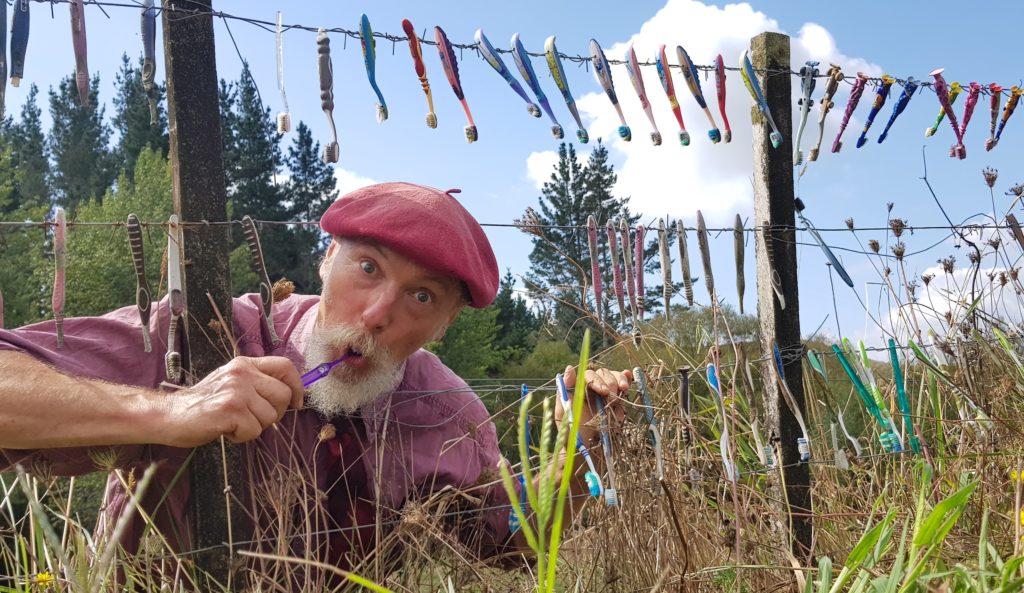When plaque hits the road
Where did a fence learn to floss?

Down a rural country road, southwest of Hamilton, lies the small village of Te Pahu. With its small community vibe, you would never know it holds the hidden secrets of the 8th wonder of the world.
Keep your eyes peeled – you might just miss the toothbrush fence.
What started off as a fun neighbourly prank turned international after Graeme Cairns, a New Zealand artist, musician, performer and a former politician, hung 24 left-over toothbrushes on his neighbour’s fence.
The 24 soon turned to 50, as his neighbours joined in the carefree horseplay.
The fence, a form of installation art, happened to be mentioned in one of the early episodes from Flight of the Concords. Intriguing people, hundreds sent their toothbrushes from all over the world to Cairns.
About 12 years later the fence has more than 2000 toothbrushes and stands strong, Cairns chatted.
“It just sort of ballooned out of all proportion from what I expected. Just a really little prank. A really small prank that’s gone international.”
The fence has not always had it easy. Owners of the paddock behind the village’s icon once put cows in the backdrop, who somehow managed to eat the heads of roughly 1000 brushes.
Now a toothbrush expert, Cairns can tell the difference between various brands of toothbrushes. He has come up with over nine different toothbrush design categories, as well as colour coding the brushes onto the fence.
One of his favourite toothbrushes was a little, short, black toothbrush with an unusually shaped wide tapering handle. Jet black with bright red bristles.
“I’ve never seen anything like it before, it looked fantastic.” Cairns declared.
Even though Cairns has a heartfelt connection to the fence, it has become a much-loved community project, promoting fun and letting him share his art with the rest of the district.
“I have a curious sentimental attachment to this fence. It’s become an important part of the interesting world that I, and by extension, everyone else now lives in. Ascribing meaning to mundane objects and processes is one of the obsessive and slightly odd things that artists seem to do.”
- If you want to get amidst this whimsical bit of fun, send in your toothbrushes to The Toothbrush Bucket, 294 Limeworks Loop Road, RD5, Hamilton 3285 or make a visit via 294 Limeworks Loop Road, Te Pahu, Hamilton 3285, New Zealand.




